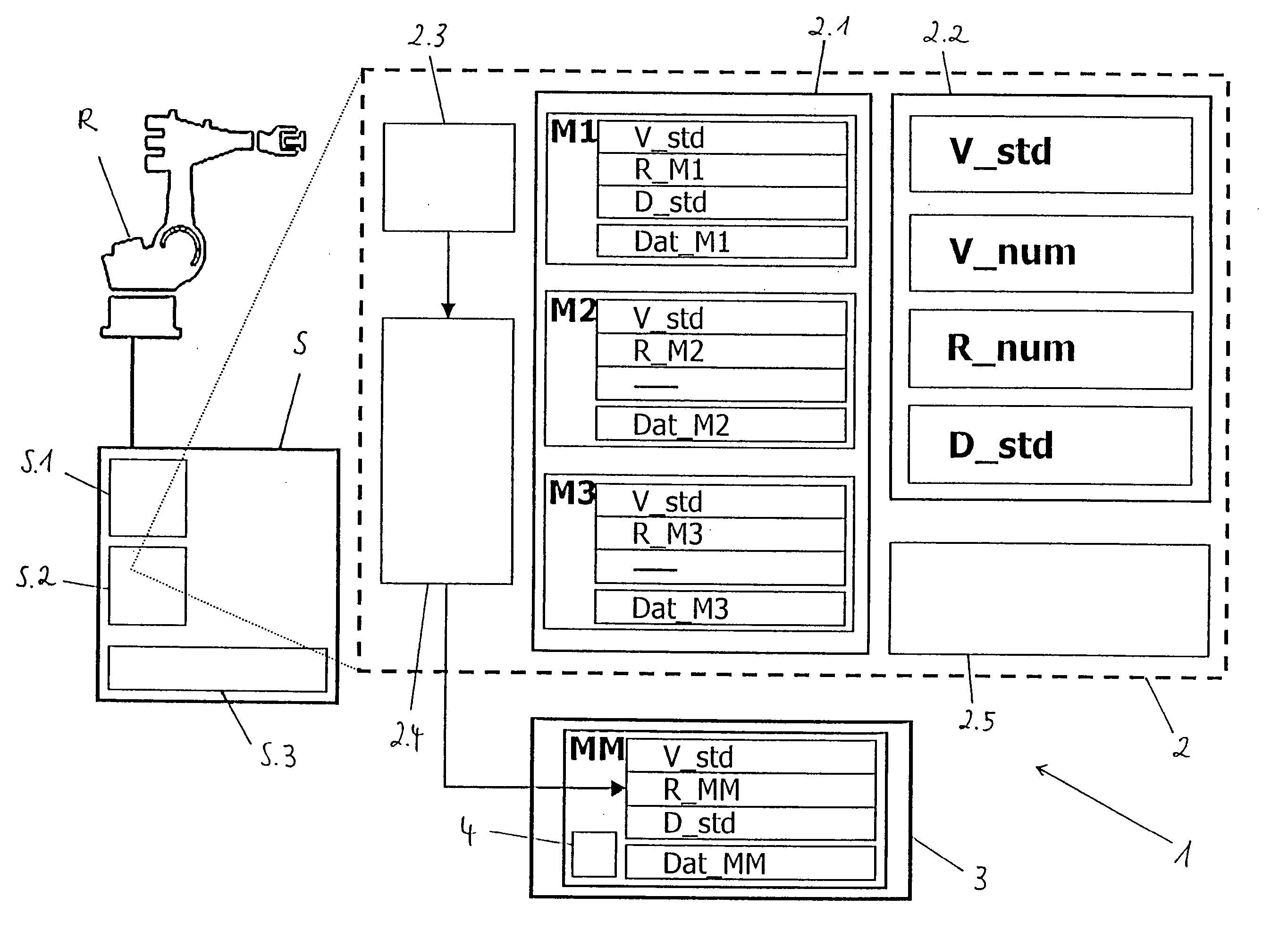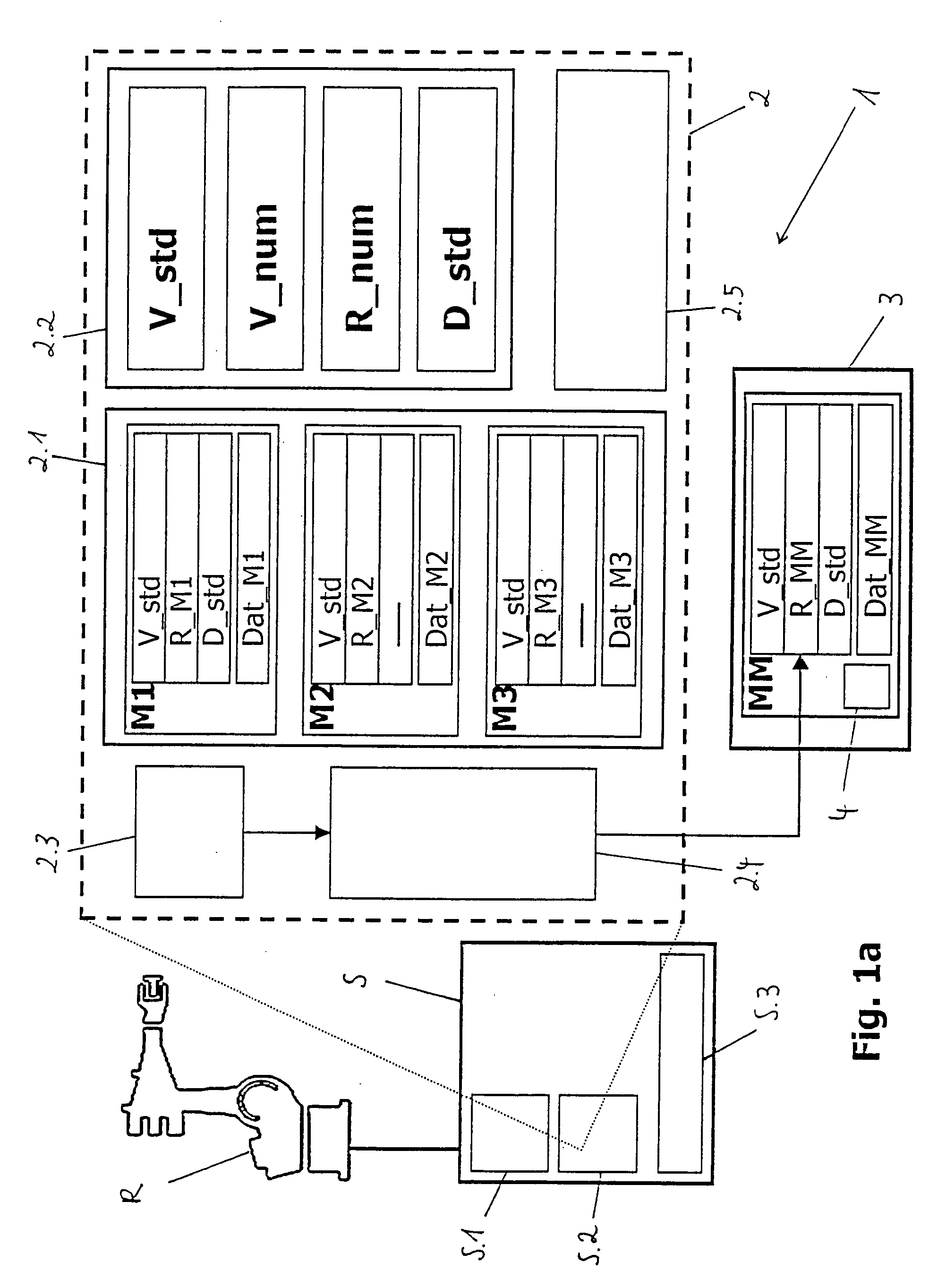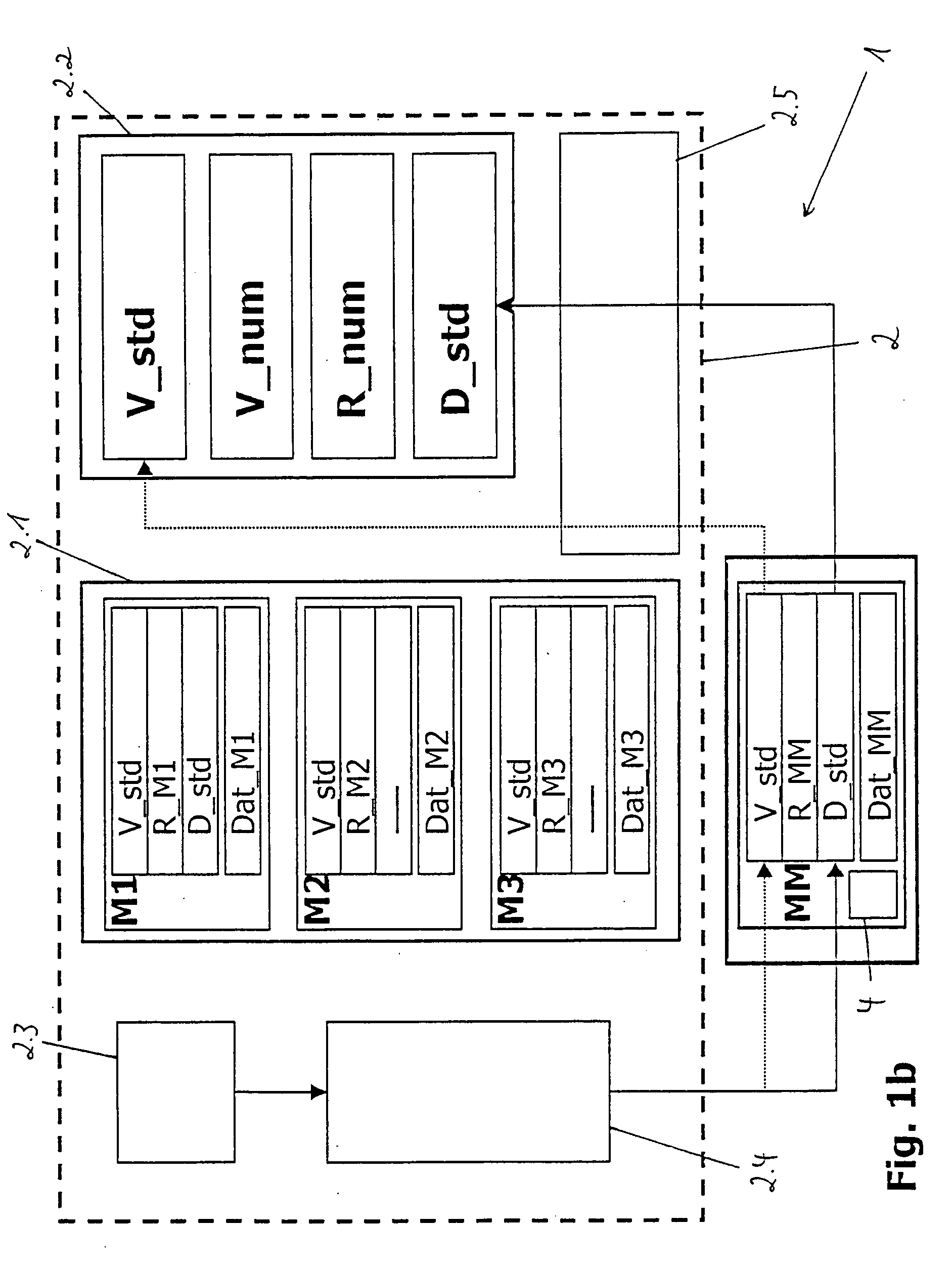Process and device for controlling the robotal device
- Summary
- Abstract
- Description
- Claims
- Application Information
AI Technical Summary
Benefits of technology
Problems solved by technology
Method used
Image
Examples
Embodiment Construction
[0064] Referring to the drawings in particular, FIG. 1a shows a typical multiaxial industrial robot R along with the corresponding control unit or control means 5, in which a processor unit S.1, a working memory S.2 as well as a mass storage unit S.3 are also shown as components of such a control means 5, which are regularly present. Furthermore, FIG. 1a shows, on the basis of a block diagram, a device 1 according to the present invention for controlling a robotal device, such as the multiaxial industrial robot R, with a set of kinematic models M1-M3 in the core 2 of the robot control as well as with a model module MM with the backward calculation called.
[0065] First, the device 1 has a control core 2, which is preferably set up in a programmed form, i.e., on the basis of suitable software on a control computer (the control unit S.1) for the robotal device R. This regularly happens by loading a corresponding software application into the working memory S.2 of the control computer. ...
PUM
 Login to View More
Login to View More Abstract
Description
Claims
Application Information
 Login to View More
Login to View More - R&D Engineer
- R&D Manager
- IP Professional
- Industry Leading Data Capabilities
- Powerful AI technology
- Patent DNA Extraction
Browse by: Latest US Patents, China's latest patents, Technical Efficacy Thesaurus, Application Domain, Technology Topic, Popular Technical Reports.
© 2024 PatSnap. All rights reserved.Legal|Privacy policy|Modern Slavery Act Transparency Statement|Sitemap|About US| Contact US: help@patsnap.com










